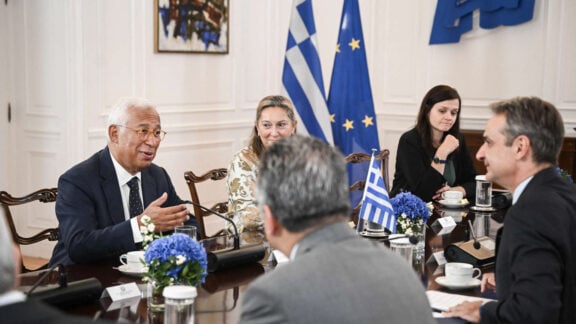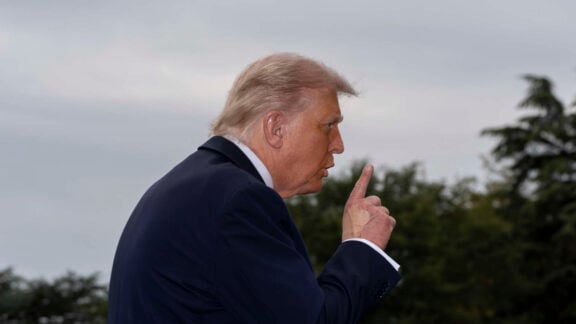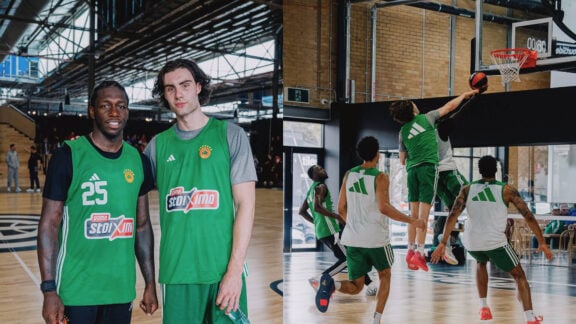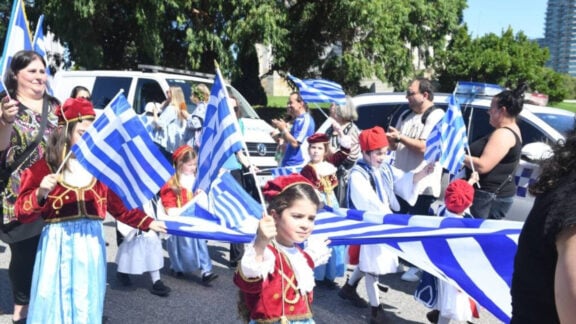Just over thirty years ago the National Gallery of Australia together with the Museum of Victoria mounted a loan exhibition entitled Civilization: Ancient Treasures from the British Museum.
The superb catalogue was written by Timothy Potts, then Director of the National Gallery of Victoria (now Director of the J. Paul Getty Museum, USA). ‘Ancient’ included the Near East (‘the cradle of civilization’) and Egypt as well as Greece and Rome.
Three decades on, the British Museum in partnership with the National Museum of Australia in Canberra, has sent down under another stunning selection of over 170 objects from its near-peerless collection in London, Ancient Greeks: Athletes, Warriors and Heroes which looks at sport, politics, drama, music and warfare.
Again, a superb accompanying catalogue has been produced, the main text by the current head of the British Museum’s Greek and Roman Department, Peter John Higgs, and with an introductory essay by Professor Alastair Blanshard from the University of Queensland, a former PhD student of mine and Dr Diana Burton from the University of Wellington, New Zealand.
I note that the Greek community of Canberra, Greek Australian media and Greek Australian leaders, even (Byzantine) Orthodox priests, in Australia’s large Greek Diaspora, support this exhibition. That is an important point for obvious reasons given the irredentist position on the reunification over the British Museum’s position on the restitution of the stolen Parthenon Marbles to Greece.

I don’t consider everything that the Trustees of the British Museum do to be always all bad. Far from it! Rather, it’s what they don’t do, what they refuse to do, that – as they say – gets my goat. I must therefore ‘declare an interest’. I am currently Vice-Chair of the British Committee for the Reunification of the Parthenon Marbles (BCRPM) and an elected Vice-President of the International Association for the Reunification of the Parthenon Sculptures (IARPS). (The BCRPM was not actually the first such national body – that honour belongs to the International Organising Committee -Australia – for the Restitution of the Parthenon Marbles (IOCARPM). Both those committees were originally inspired in the early 1980s by Greece’s then Culture Minister, Melina Mercouri, whose example and legacy continue indeed to inspire us all.)

The ‘R’ of BCRPM originally stood for ‘restitution’, and that term is still often bandied around in the ongoing debates, but it’s a legal term, and we of the BCRPM and IARPS, following the lead of successive Greek governments, have set our face against pursuing any legal route – that is, any legal action – to reunification and thus emphatically prefer ‘Reunification’. This (not little) matter of terminology is particularly relevant to the peculiar British case, where the British Museum, the museum that holds the largest amount of Parthenon sculptures outside Greece, relies on the supposed legality of an (1816) Act of Parliament.
Actually, neither the claim that Britain’s one time Ambassador to the Ottoman Empire, Lord Elgin, acquired his loot ‘legally’ nor the claim that the British Museum possesses what it possesses lawfully holds any water. Just to be absolutely clear, finally, the ‘P’ is also crucial: the Greek government is not requesting the return of ALL the ‘Elgin’ Marbles, i.e. all the sculptures that Elgin removed and are now in the B.M., just those that once adorned the Parthenon.

I have since the mid-1980s been heavily involved in this partly political, partly aesthetic, partly academic campaign: to reunify all the extant members of the original Parthenon temple back in Athens where they originated in the sixth and seventh decades of the 5th century BCE. The campaign didn’t, of course, start in the 1980s but rather in the second decade of the 19th century, almost immediately after the largest single act of ‘removal’ occurred, thanks to the endeavours of the 7th Lord Elgin and his cohorts. ‘Thy plunderer’, thundered philhellene Lord Byron, ‘was a Scot’.
A commission of enquiry, set up by the British – or brutish? – government of the day, disagreed with Byron and sided with Britain’s former ambassador to the Sublime Porte, agreeing to pay Elgin £35,000 pounds in return for his handing over what he had ‘collected’ to be held in trust in perpetuity in the British Museum on behalf of the British nation or people. It is that 1816 Act of Parliament under which the Trustees of the British Museum today shelter in a feeble attempt to justify their clinging on to what even they now call the Parthenon (no longer ‘Elgin’) Marbles. For they have no other possible justification: even if there were cast-iron documentary proof that Elgin had been given express official permission by the then Ottoman ruler of Greece to do what he in fact did (which there isn’t), they would still be using the context of a radically alien international order (the Napoleonic wars) to confer a spurious legality on a transaction that according to today’s international norms of cultural diplomacy has no possible justification whatsoever.

A further – and to some of us insurmountable – objection to the British Museum Trustees’ claims is that since 2009 there has existed magnificently in Athens, almost within touching distance of the Acropolis, a new Acropolis Museum, the top floor of which has been constructed as a dedicated Parthenon gallery. The key word here is ‘Acropolis’. The Parthenon derives its significance ultimately from its original physical-cultural context. It is a UNESCO World Heritage site. The Acropolis is considered in Greece a ‘sacred’ eminence. The gulf between the Acropolis Museum’s Parthenon display in close intervisible proximity to the actual original building and that in the Duveen Gallery of the British Museum is simply incommensurable.
But besides ruling out the alleged claim of legality – always problematic in the sphere of international diplomatic relations anyhow – we have on our side the overriding claim of ethical probity. Times change, and mores change with them. Imperial or colonial force majeure cuts no ice today in sensitive matters of cultural heritage such as these. It was in post-colonial France, and with special respect to Africa, that the contemporary movement towards restoring to their homes of origin artefacts forcibly removed under colonial-imperial dispensations first acquired a head of steam. The Parthenon and its sculptures are a resolutely European-European issue, and one moreover with a peculiarly political – that is, democratic – dimension.

Of course, the ancient Greeks’ democracy was not ours: the Athenians, who invented a form of δημοκρατια, owned slaves and denied votes to citizen women. But the notions of freedom and equality are equally fundamental to both their men-only direct democracy and our gender-inclusive representative democracy. This is what gives the call for the reunification of the Parthenon Marbles in Athens its peculiar political salience: what is required from our British government is a gesture of generosity – one that would be reciprocated by the Greek government in, if you’ll forgive the pun, spades. The Parthenon sculptures simply mean much, much more to the Greeks than they do to us in Britain.
And in case anyone should still suggest that to return the Marbles would be to open the floodgates of claims for ‘restitution’ of other artefacts among the 8 million currently held by the British Museum, let me be crystal clear: we of the BCRPM and IARPS are adamant that the Parthenon Marbles are a unique case, without any further implications. The proof? We are not even asking for the return of the most beautiful Caryatid support pillar removed by Elgin from the Acropolis Athena temple known as the Erechtheion, even though her sisters can now be seen to truly stunning effect in the new Acropolis Museum! It is time therefore for Hestia (see illustration) and her companions to be allowed to return home.

For more information on Ancient Greeks: Athletes, Warriors & Heroes visit the NMA
References:
British Committee for the Reunification of the Parthenon Marbles (BCRPM) @ www.parthenonuk.com
International Association for the Reunification of the Parthenon Sculptures (IARPS) @ https://www.facebook.com/parthenonsculpturesreunitediarps
Paul Cartledge is A.G. Leventis Senior Research Fellow, Clare College & Emeritus A.G. Leventis Professor of Greek Culture in the Faculty of Classics, University of Cambridge. www.classics.cam.ac.uk/directory/paul-cartledge









